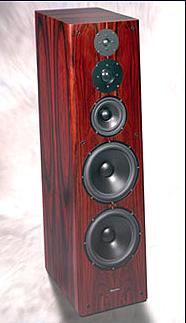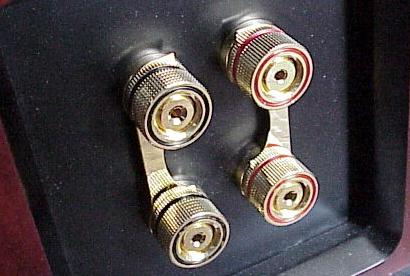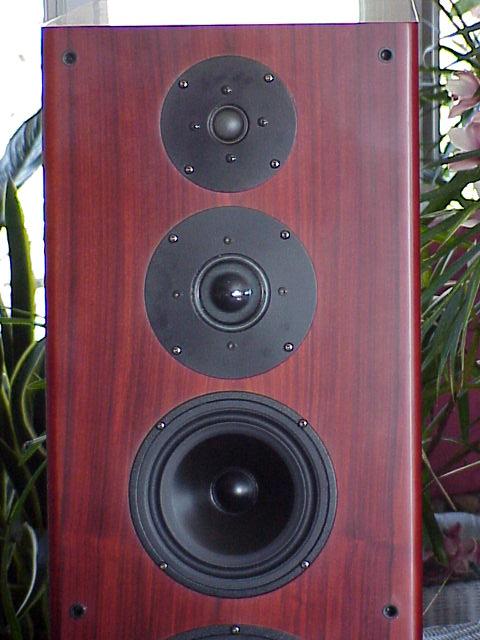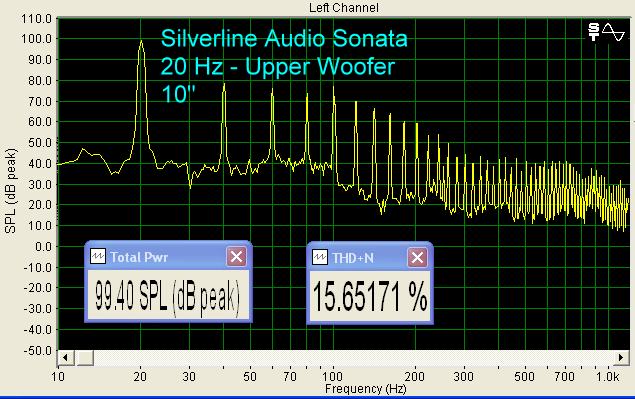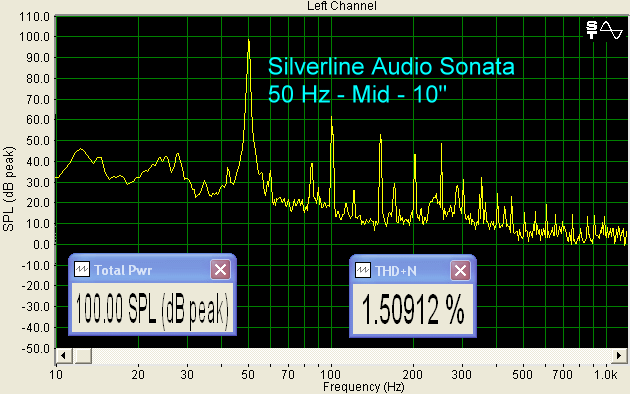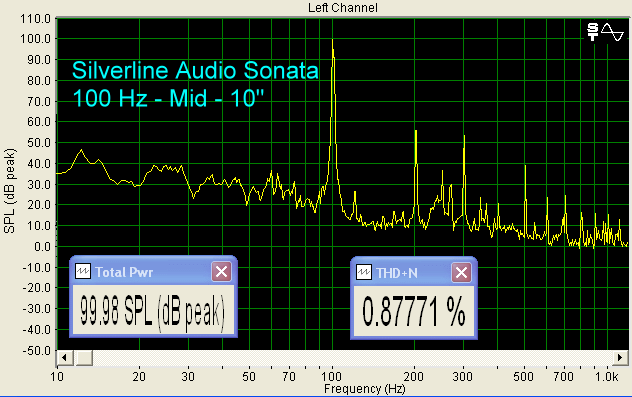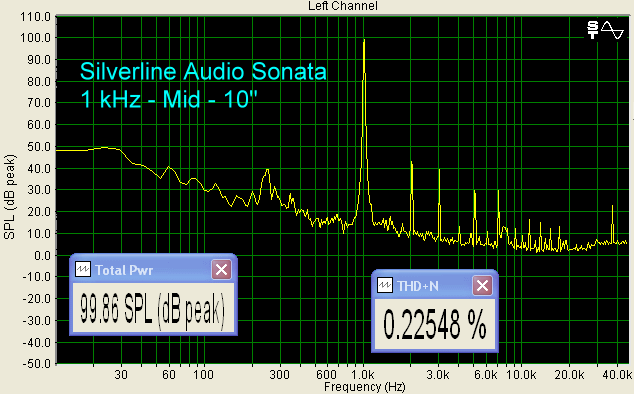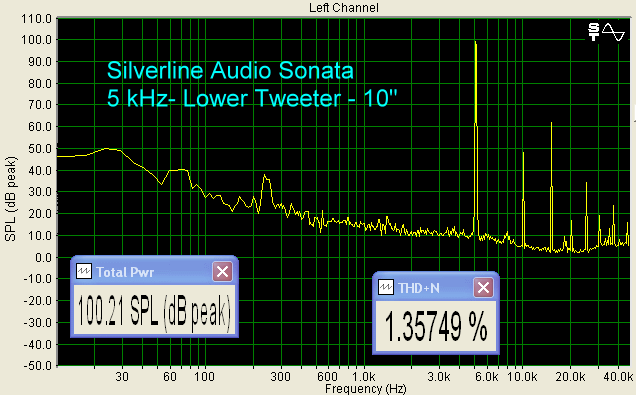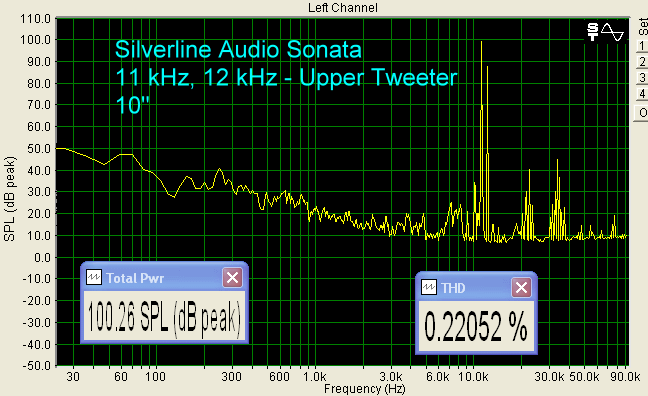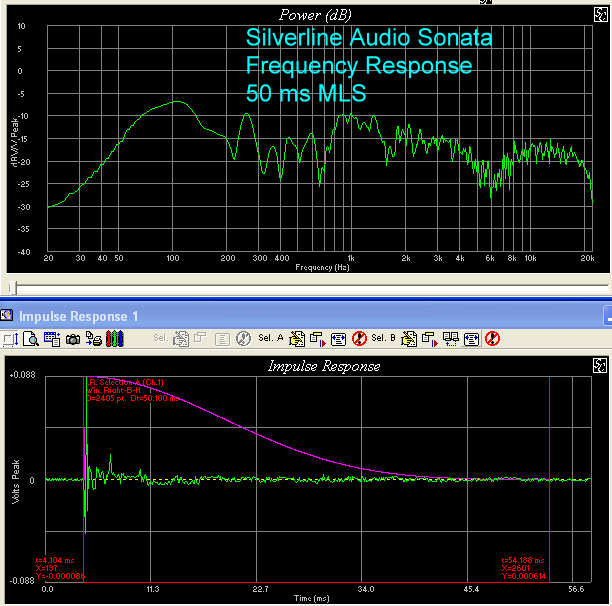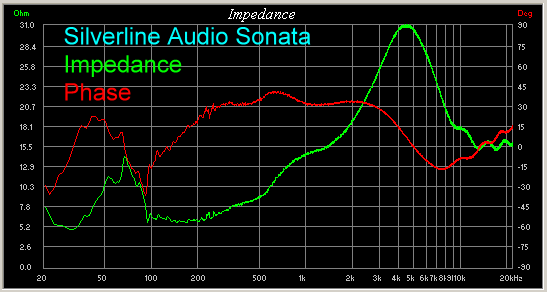|
|||||||||||||||
|
Introduction Secrets was the first magazine to review Silverline Audio speakers back a few years, when Alan Yun brought his designs to the United States. He had a small line back then, but that has all changed with his success. The Sonatas are one of his most popular - and perhaps best - models. He recently updated the Sonatas to the Sonata II, and I decided to see, or rather listen, for myself. The Design The Sonatas are very big, at 45" high, and also very heavy, at 130 pounds each. The review pair were beautifully finished in Rosewood on all sides, including the rear. Although they come with the requisite grille, I found them to be most attractive with the grilles off, and that is the way I listened to them much of the time. The rear panel has a large 4" port and huge speaker binding posts, configured for bi-wiring or bi-amping.
These speakers are a five-way design, meaning that there is a tweeter, mid-tweeter, mid-range, mid-woofer, and woofer. This requires 4 crossover frequencies, which for the Sonatas, are 600 Hz, 1.2 kHz, 2 kHz, and 3.5 kHz. The slope is not specified, but from my tests, which indicated quite a bit of the same frequency coming from more than one driver at the same time, it must be quite shallow. The tweeter and mid-tweeter are both soft dome designs, while the mid-range driver is a cone, as shown below.
The Sound I tested the Sonatas with a Sony SACD player, Balanced Audio Technology VK-5i tube preamplifier, Balanced Audio Technology VK-75SE tube power amplifier, Nordost cables, and BetterCables. Compared to my Magneplanar speakers, the Sonatas are much more detailed, due to their more forward highs. The Maggies are a little more recessed at the upper end. While my Maggies sound great at very low volume, the Sonatas needed more volume to sound their best. They are very powerful speakers, and are meant to be played at reasonably high volume. I listened to a wide variety of CDs and SACDs, and was always satisfied with the sound quality of the Sonatas. Orchestral music was full, clean, and never mushy. All instruments, even in full orchestra crescendos, were distinguishable from one another. This is a result of having so many drivers. They almost sounded like a line source speaker, because the column of drivers is so high, and like my Maggies, which are a line source, the soundstage was only slightly wider than the physical spread of the speakers. Piano, violins, and the human voice are ultimate tests for any speaker, and the Sonatas just breezed through them. I especially enjoyed classical piano concertos with the Sonatas, as they came as close to sounding like the piano was actually in my living room as I have ever heard. Although the Sonatas have two 10" woofers, I found myself wanting to put a subwoofer in the system. You will see why when you look at the bench tests, below. On the Bench Although the specified crossover frequencies would normally indicate which driver I should place the microphone closest to, I found that the sound did not necessarily come from that driver at the highest SPL, using my PC and sound card for generating (with a monoblock power amplifier) and measuring the signals (calibrated test microphone). This seemed a bit odd, so I also played test signals from a CD player and different power amplifier (the ones I used for the listening tests), with the same results (I tried it with each of the two speakers as well), namely single sine wave sounds coming from several drivers at the same time. So, when measuring the distortion, I first determined which driver was producing the most sound by putting an SPL meter within 2" from the center of each driver, and used that one for the test. I then placed the test microphone 10" from each respective driver when measuring distortion, including the tweeters, due to the fact that there was always some sound coming from adjacent drivers, even with just a single sine wave frequency. At 20 Hz, 100 dB, 10" from the driver, there was quite a bit of THD, as shown below.
At 31.5 Hz, there was even more distortion than at 20 Hz. This is unusual. It really is a rather large amount of distortion too.
At 50 Hz, the distortion was a much more acceptable 1.5%. As I mentioned, the specified crossover would have indicated that one of the woofers should be producing it primarily, but there was a higher SPL reading (by about 2 dB) at the mid-range driver, so that is where I pointed the microphone.
At 100 Hz, a very acceptable < 1% THD.
At 100 dB, 10" from the driver, and at 1 kHz, distortion was less than 1/4 of 1%. Excellent.
At 5 kHz, THD was 1.4%. Acceptable, but not terrific.
The IMD test, using 11 kHz and 12 kHz tones, yielded only 0.22% THD. Very good.
I measured the frequency response at a distance equal to the distance between the lower edge of the lower woofer, and the upper edge of the upper tweeter. The results show the effects of having a shallow slope on the crossover, namely interaction between the sound coming from the various drivers. It seems to start at a high response at about 100 Hz, then decline to about 500 Hz, then rise at 1 kHz and decline to about 6 kHz, then rise again and decline at just above 20 kHz. It is very difficult to get a truly flat response when you are dealing with so many different drivers. The steep roll-off below about 75 Hz shows that those two 10" woofers are not putting out that much bass. I guess that is why I felt like adding a subwoofer when I was listening.
The impedance of the Sonatas has a minimum of 5 Ohms at 35 Hz and a maximum of 31 Ohms at 4.5 kHz. DC resistance is 2.64 Ohms. (Remember that the "impedance" of a speaker is the combination of resistive impedance, i.e., DC resistance, and reactive impedance due to inductance and capacitance.) The electrical phase stays well within ± 450, which is excellent.
Conclusions The Silverline Audio Sonatas have their virtues and their faults, but mostly virtues. Building a five-way design is very, very difficult, but Alan Yun appears to have done a great job with these. Although sine waves came from more than one driver, I still enjoyed the music, which is the bottom line. They sound wonderful, have a furniture quality build, are beautiful, and all things considered together, are a good value.
- John E. Johnson, Jr. -
|
|||||||||||||||

